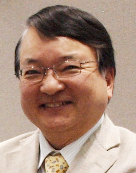
Masaru Miyao
University of Fukui, Japan
Title: Visual ergonomics of 3D stereoscopic images: Augmented reality using smart glasses
Biography
Biography: Masaru Miyao
Abstract
Recently, binocular see-through smart glasses have become available. These glasses stereoscopically overlay a virtual image on a real world image and are used as a form of augmented reality (AR). People can utilize these devices in many ways, including in industrial environments. We aimed to quantitatively estimate the efficiency of information seeking when using these smart glasses. We employed a uniquely developed “Route Tracking Test (RTT)” using 3D imaging and AR technologies. With the help of 143 volunteers participating, we evaluated the ease and accuracy of an information seeking task. A comparison was made between using and not using the smart glasses. Also, we measured their accommodation when they watched 2 targets of real and virtual images. We found that the smart glasses significantly increased the ease and accuracy of the task. Finally, we confirmed the advantage of the smart glasses compared with conventional operational work based on paper instructions. We propose the following guideline for good visual recognition with binocular see-through 3D smart glasses. 1. In AR work guidance, these glasses stereoscopically overlay a virtual image so that the workers can see the operating field and the guidance simultaneously. The viewing distance of the virtual guidance should be the same as or a little closer than the operating objects. Otherwise, the glasses cannot superimpose the guidance and working field. 2. The inter-pupillary distance (IPD) of the smart glasses should be suitable for most users and controllable. If the IPD setting of the glasses is wider than that of users, the users will not be able to recognize the virtual guidance. The IPD setting should be controllable between 57 mm to 69 mm for the 95 percentile of Japanese of both sexes. 3. The luminance of the virtual guidance images and real operating fields should be similar
